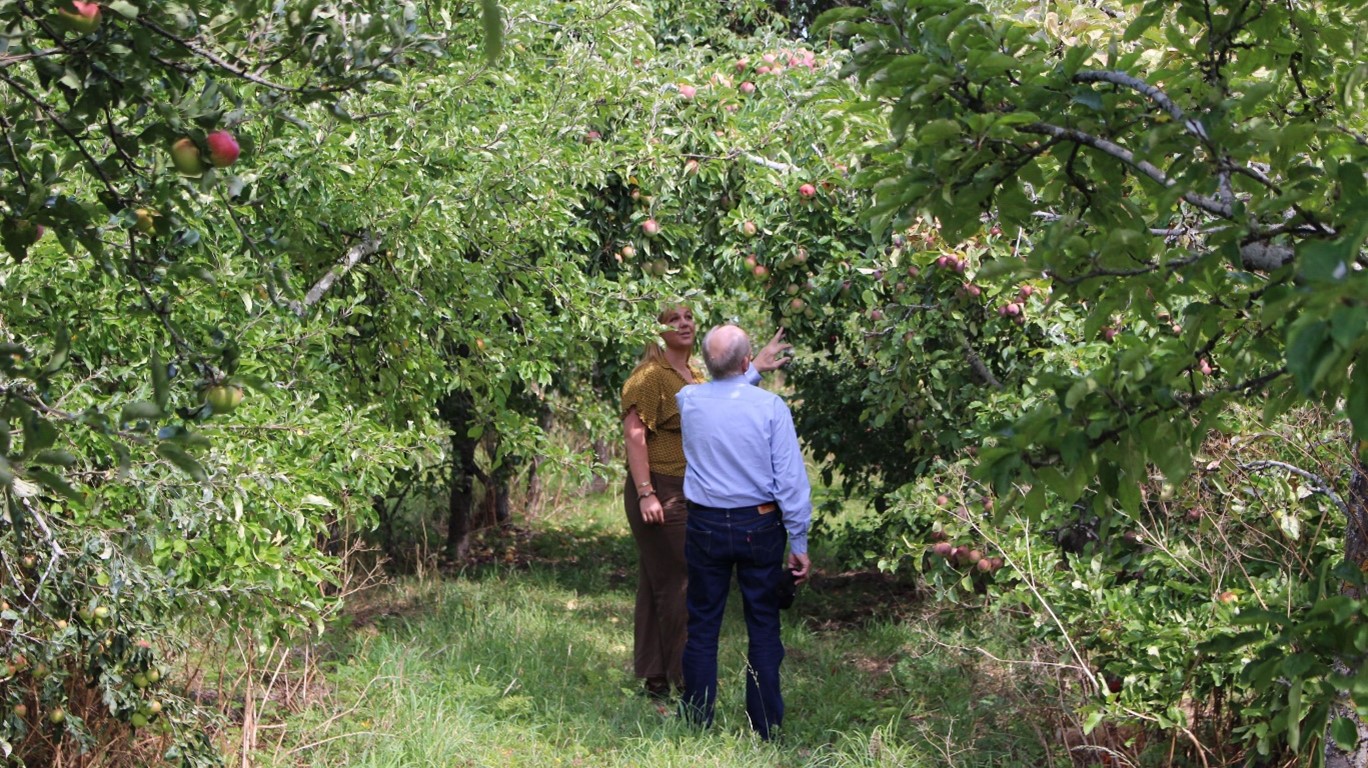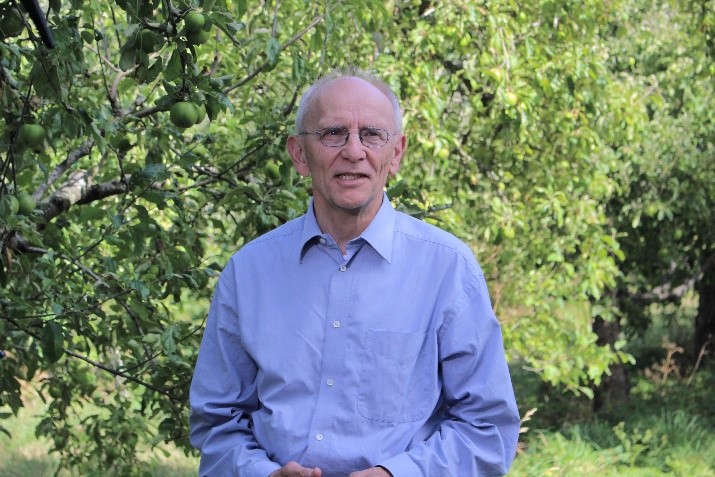Growing global food security with digital tools
Orchards in Hawke’s Bay are among 6 key sites for an international project testing the use of digital technologies — including artificial intelligence (AI) — to combat plant pests and diseases. Known as STELLA, the Horizon Europe project is a collaboration between 14 partners across France, Belgium, the Netherlands, Lithuania, Austria, Italy, Greece and New Zealand.
On this page I tēnei whārangi

Armin Werner and Joanna Costello from Lincoln Agritech are leading New Zealand’s involvement, contributing the company’s expertise in digital agricultural data.
“Plant diseases cost the global economy more than $360 billion New Zealand dollars a year,” Armin, who is Lincoln Agritech’s Group Manager of Precision Agriculture, says.
With an initial focus on 8 diseases of importance to the EU, STELLA aims to provide tools to establish holistic digital monitoring systems for crop and forest diseases and pests.
“By combining data from multiple sources, such as remote and proximal sensing and citizen science, we’re seeking to detect outbreaks before they become unmanageable,” Armin says.
“This will aid global food security.”

Armin Werner, Lincoln Agritech Group Manager of Precision Agriculture
Hitting the bull’s eye
While STELLA’s European sites focus on olives, plane trees, processing tomatoes, potatoes and grapes, in New Zealand the focus is apples.
In Hawke’s Bay, Lincoln Agritech is monitoring spores and infections of bull’s eye rot in the fruit.
This postharvest disease is caused by fungi. It takes its name from the brown circular marks, resembling eyes, that it makes on apples and pears predominantly when they’re conserved in cool stores before being shipped to market.
“Infections are latent while the fruit is on the tree and current sensing technology can’t detect them,” Joanna, a Business Development Manager for Lincoln Agritech, says.
“STELLA uses automated samplers to collect the spores in and around the air of orchards to digitally model the risks of latent infection. This automated sampling and digital modelling will enable targeted mitigation before symptoms are present, reducing our reliance on chemical pesticides while ensuring more fruit makes it to market.”

Joanna Costello, a member of a panel discussion on Horizon Europe held at this year’s Fieldays.
How the connection began
The link between New Zealand and the STELLA project was forged through Armin's previous work on EU projects in Germany, where he connected with leaders of the STELLA consortium in Greece.
“Once New Zealand became eligible for the Horizon Europe programme, the consortium - recognising our expertise in digital agricultural - invited us to participate,” Armin explains.
“Being involved in EU projects not only allows us to work with leading scientists internationally, but also with the industry,” Joanna adds.
“We’re engaging with a diverse network of researchers, practitioners, and companies facing similar agricultural challenges. This involves exchanging insights and learning from their research and development (R&D) and implementation approaches.
“50 per cent of the partners in this project are small to medium-sized companies in the industry, so it’s really helping us to build those industry connections into Europe.”
Good science is evergreen
Though you might think the greatest challenge is the difference in time zones, Armin says it’s actually the seasonal difference between New Zealand and Europe — primarily when conducting field work and collecting data.
“But the beauty of great science is that it’s not different between regions, cultures, or economies. So, we embrace the synergies from collaborations and the lessons from working with a constantly growing professional network,” he says.
Final thoughts for researchers
Both Armin and Joanna encourage researchers interested in Horizon Europe and future collaborative R&D programmes to actively nurture their international networks.
“Become honestly interested what colleagues in Europe do, what you can offer them and what they can offer you,” Armin says.
“Bringing New Zealand and its unique science system closer to the exciting, huge, and diverse table of R&D in Europe has been a major highlight as we work to create mutual benefits for both New Zealand apple growers and our European partners.”
More information
Find out about New Zealand's association with Horizon Europe:
Successful Horizon Europe Pillar 2 projects with New Zealand partners
Visit the STELLA website to find out about their digital technologies:
Harnessing the power of digital technologie(external link)s — STELLA project

